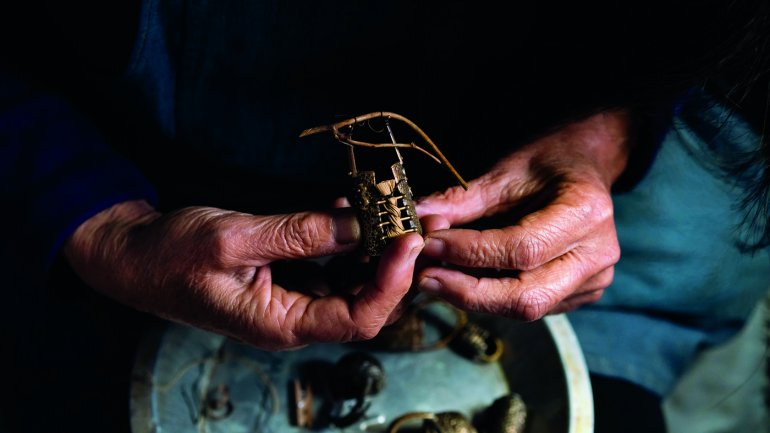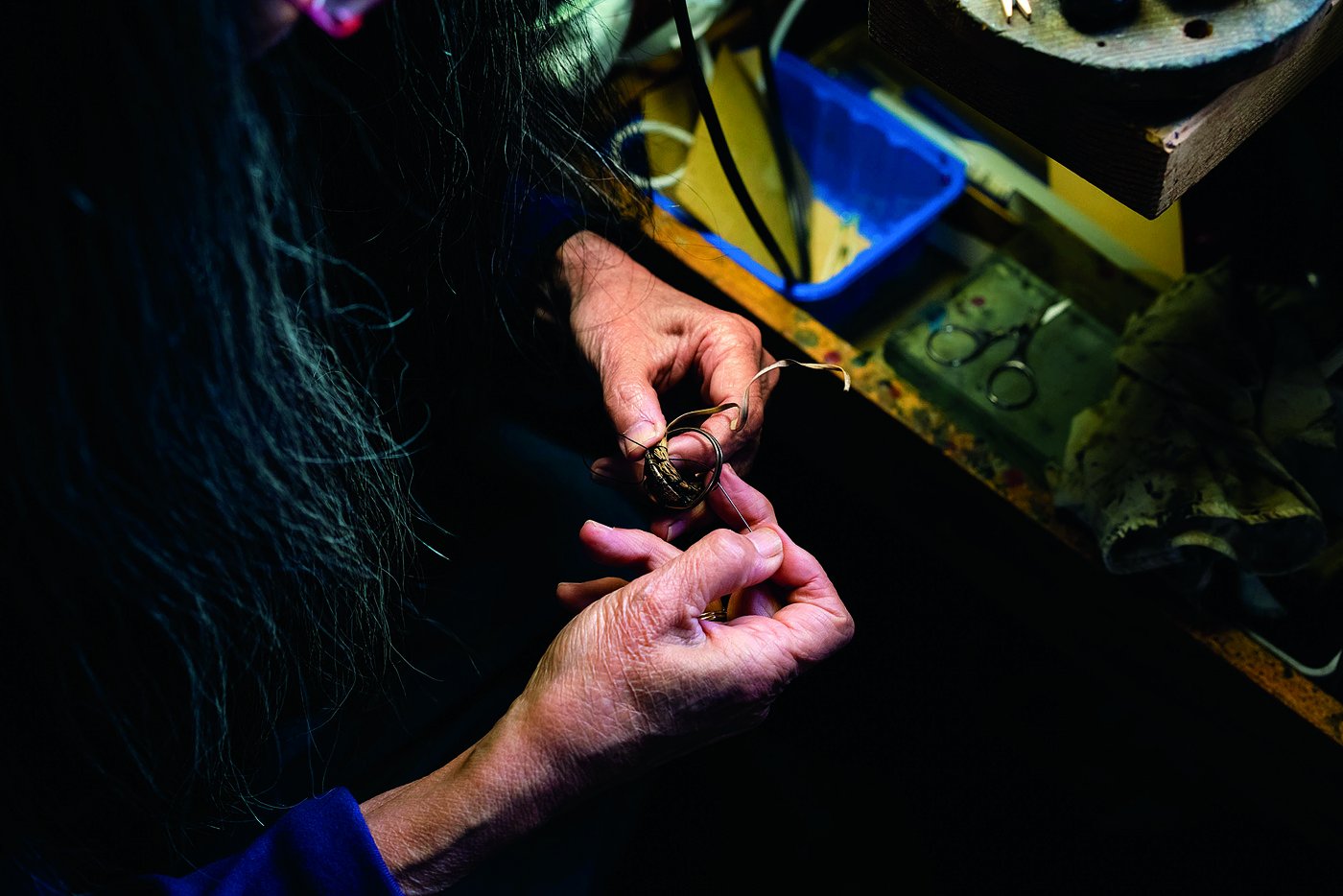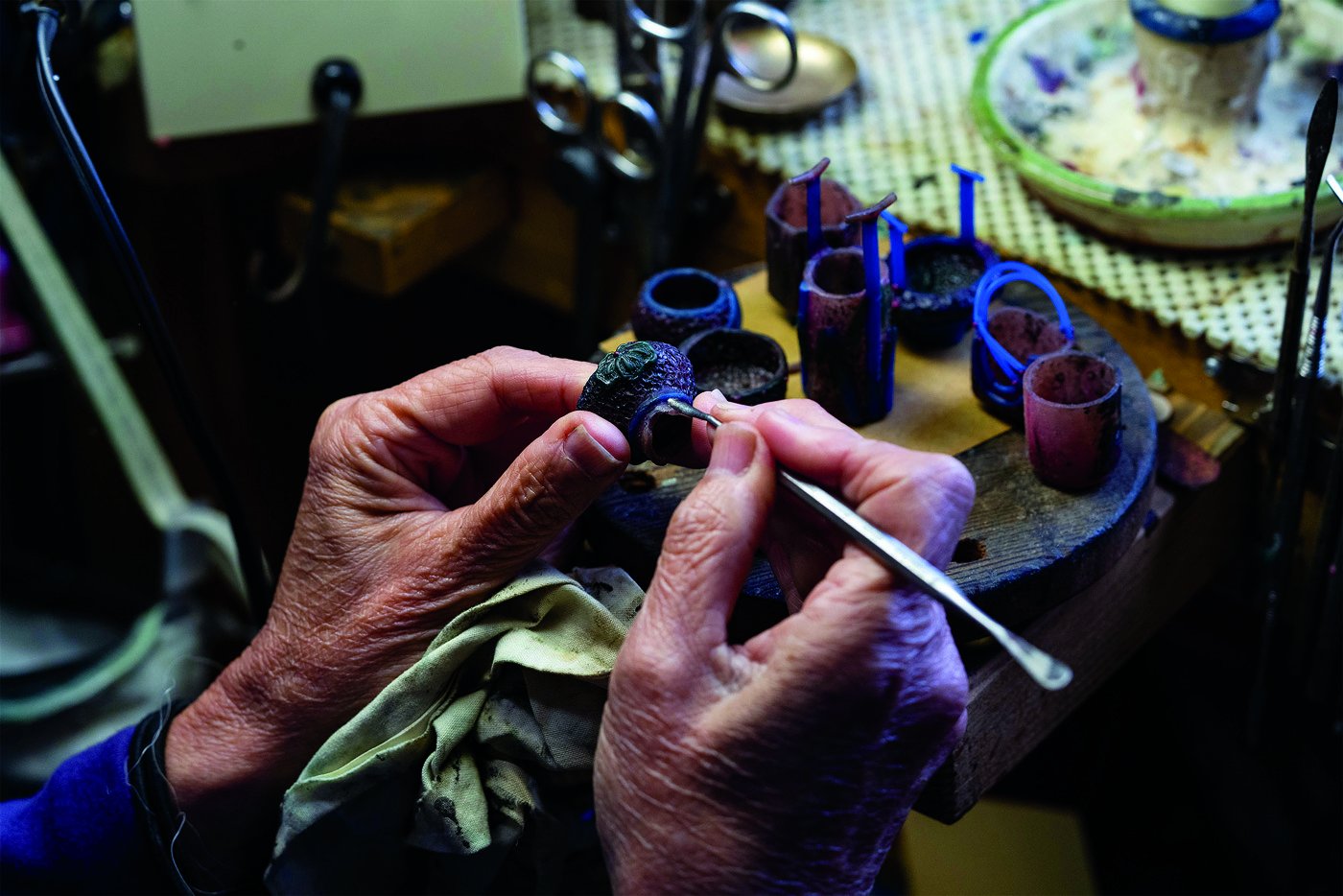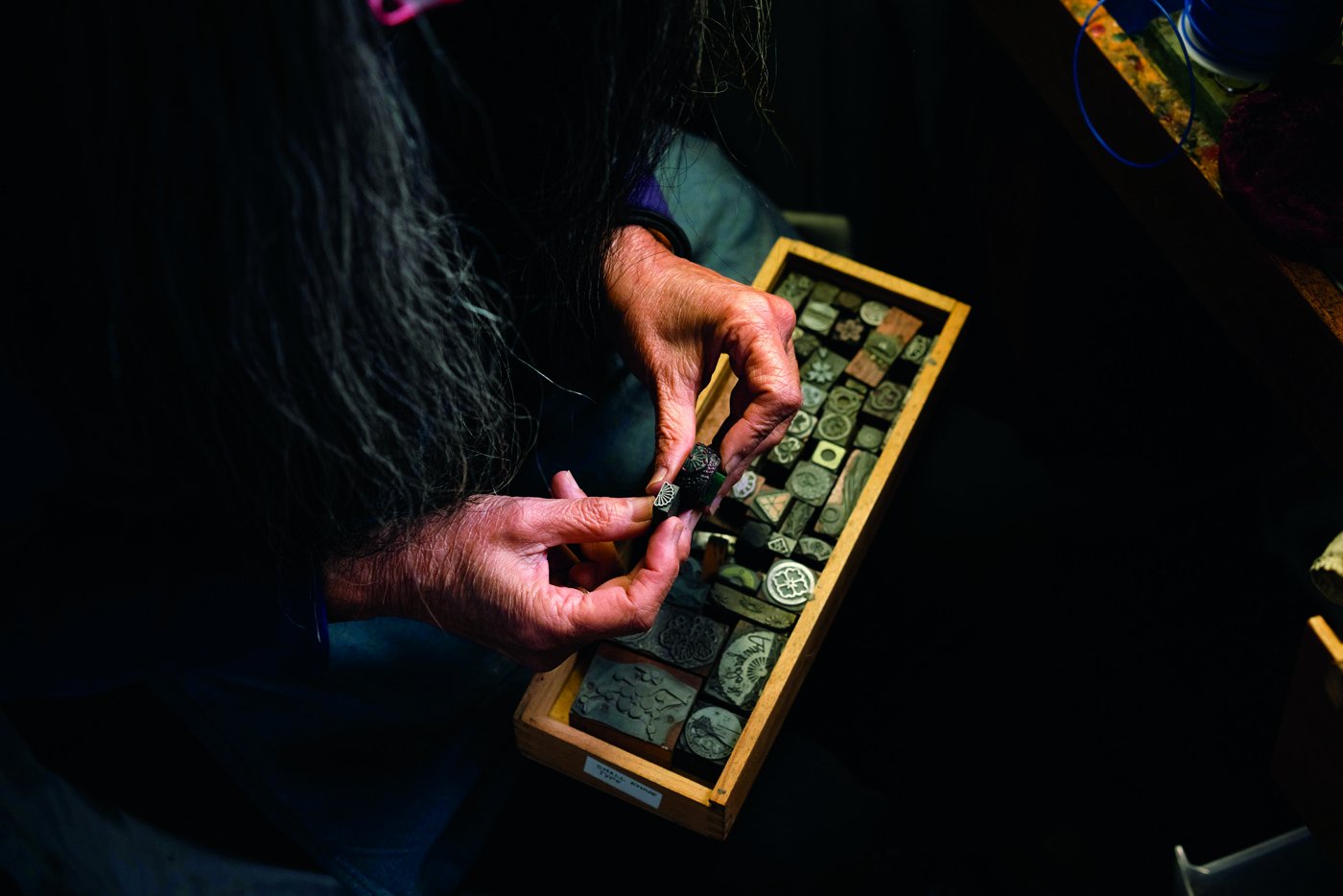Tiny Treasures
Tiny Treasures
The vessels are ornamented bronze, finished with basketry details: coils and weaving in natural materials like sweetgrass, seagrass, bamboo, and grapevine. Their shapes evoke Japanese pottery and basketry, and they’re sometimes embellished with precious metals and stones and images from the Japanese seasons.
And they’re about one and a half inches tall.
These exquisite micro-miniatures are the work of an artist who, as a little girl, spent hours in her father’s Los Angeles dental lab, watching him craft dentures from gold. Suzye Ogawa knew that she, too, wanted to make things, and small metalwork was a natural avenue for her. She was drawn to baskets as well. “I love the fact that women of all cultures have made baskets,” she says. “They’ve made them from things that normally get thrown away or get composted.” And because she grew up in Los Angeles’s Little Tokyo neighborhood, a vibrant Japanese American community, she also learned Japanese dance and ikebana, the art of flower arrangement. Putting all of that together created a nexus, she says. “I had the metal and the fiber, I like to work small—I’m nearsighted—and I had this really rich Japanese cultural environment that was subliminally giving me cues.”
During her career as a school speech therapist, Ogawa spent evenings and summer vacations developing her craft. The idea for her bronze baskets came to her while taking her first basketry class in the 1980s. “There was a wonderful little fiber shop around the corner from where I was living,” she says, “and I took my very first basketry class there, from a world-renowned basket artist who’s passed away, Judy Mulford. Working with her, a light went on in me.
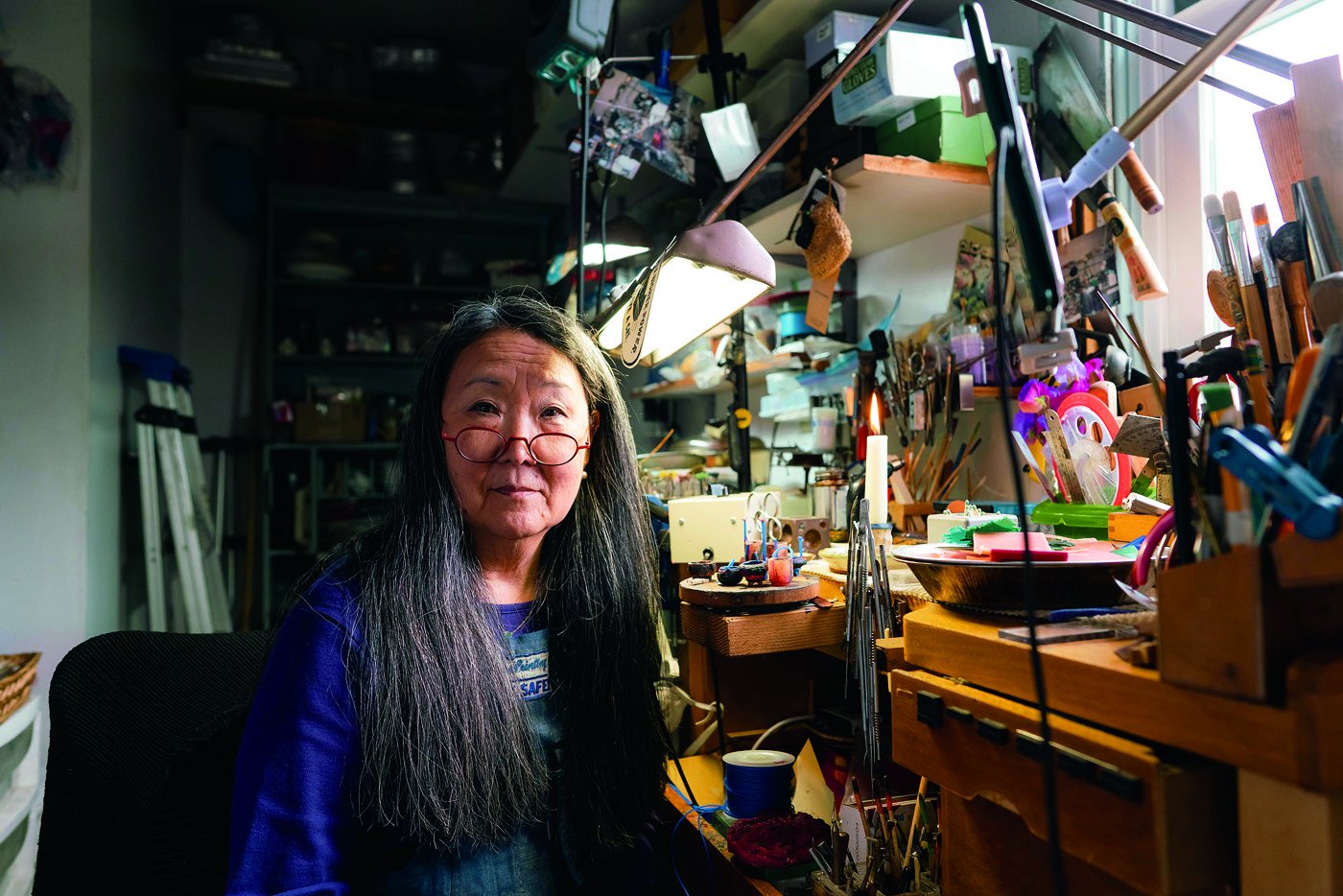
“My studio is small, crowded, and quite messy with many processes worked on at one time,” says Suzye Ogawa, pictured here at her workbench. “Very few have seen my mess, so the secret’s out now."
After eight hours of making this very crude, tiny little basket, the light went on and I said to myself, ‘Oh, I want to combine metal with fiber!’”
She eventually mustered up the confidence in 1987 to bring her work to the Contemporary Crafts Market in Pasadena. “There was interest in it,” she says. “People were already combining metal or ceramics with fiber in various ways—but nobody else was doing work that was so little!”
Ogawa, who now sells her work at other shows including ACC’s American Craft Made, is interested in how miniaturization affects the relationship between viewer and object. “People view small things differently,” she says. “Working small invites the viewer in closer. Viewers have to make a commitment to come in more closely like that, which creates a more intimate relationship. And when you have created such fine detail at that small scale, it’ll hold them, it’ll fascinate them.”
At the same time, she’s careful to distinguish her work from that of other small-scale metal artists. “People will approach me at a show, thinking the work is jewelry—because it’s small and it’s in a case,” she says. “But it’s not jewelry. I have great respect for jewelers, for whom everything is very, very precise, but that’s really not my style.”
She calls her work wabi-sabi, invoking a medieval Japanese aesthetic that values the expressive power of imperfection and small defects. “My pieces are not perfect, they all have something kind of quirky about them,” she says. “My husband is a retired architect, and he took a look at one of my baskets once and said, ‘Well, you know, it’s kind of lopsided.’ And I replied, ‘Well, yeah, I’m kind of lopsided!’
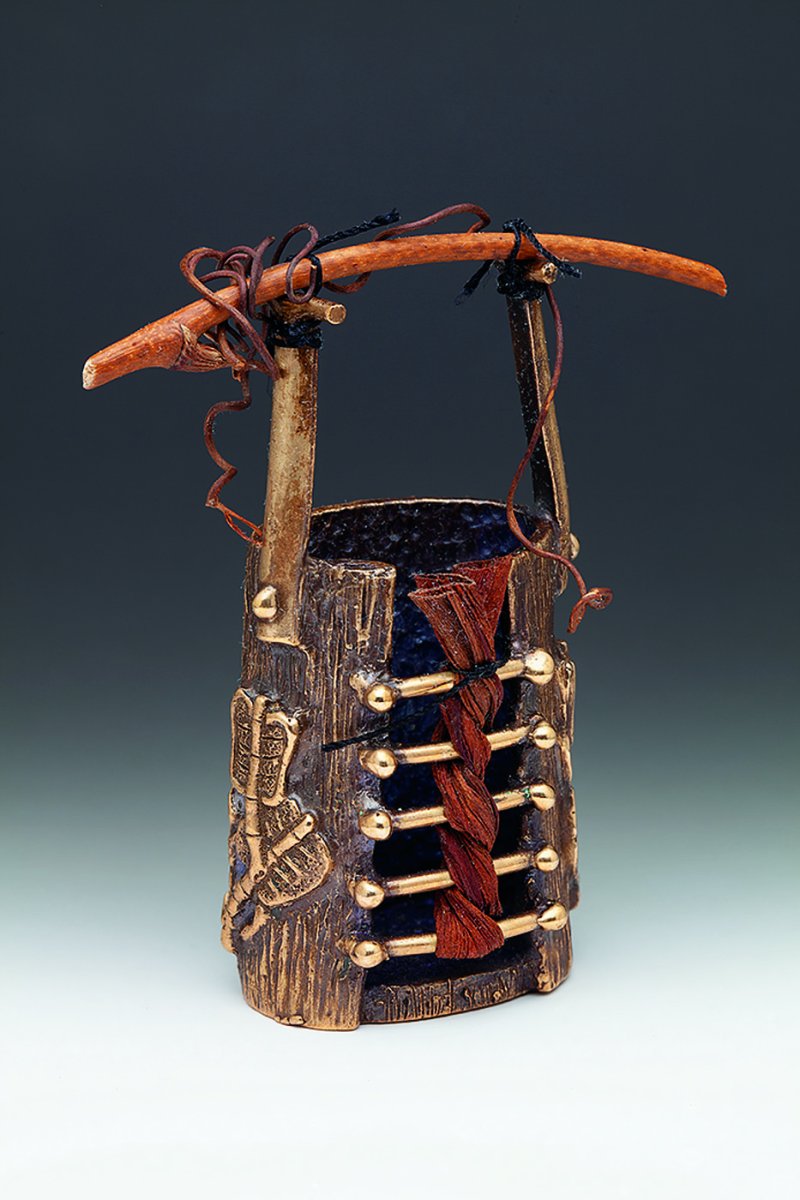
Untitled, 2019, lost wax cast bronze, twined philodendron sheath, grapevine, silk, 2.5 x 2.5 x .75 in. Photo by George Post Photography.

Untitled, 2021, lost wax cast bronze, woven sweetgrass, silk, 1.375 x 1.25 x 1.25 in. Photo by George Post Photography.
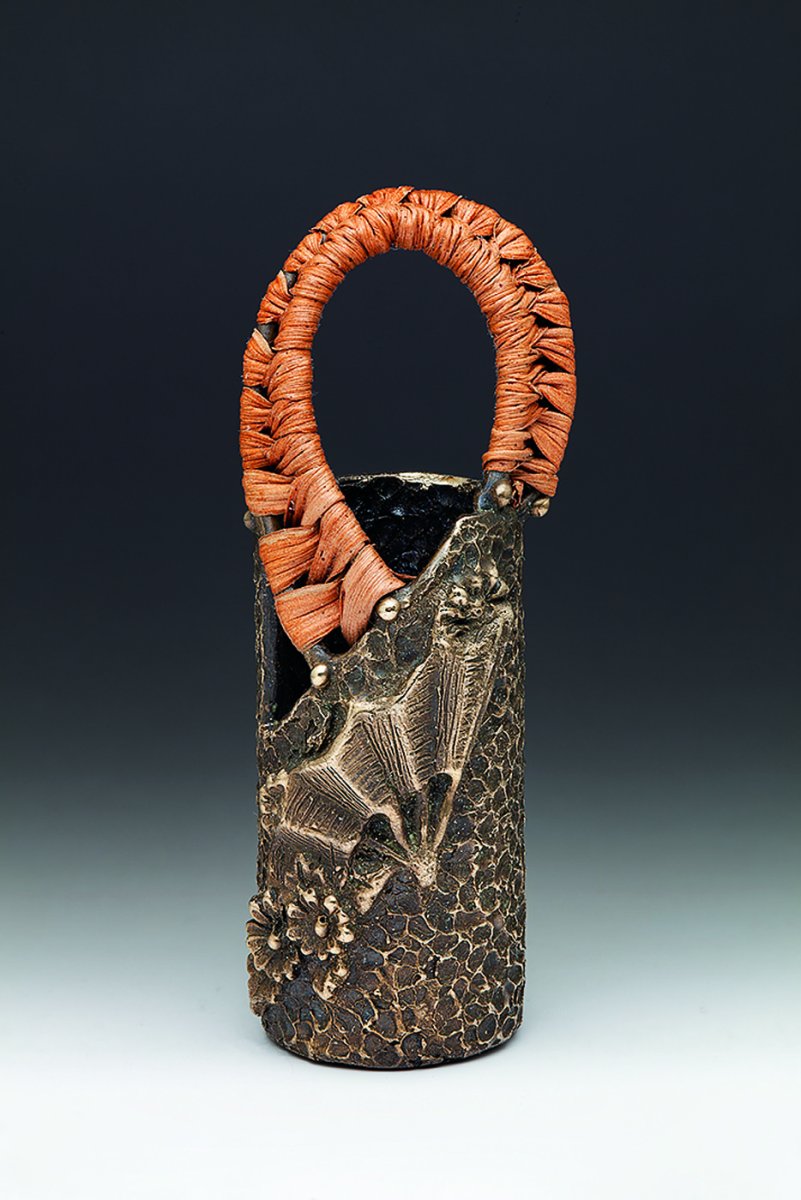
Untitled, 2021, lost wax cast bronze, woven sweetgrass, 2.75 x .75 x .75 in. Photo by George Post Photography.
“Viewers have to make a commitment to come in more closely . . . which creates a more intimate relationship.”
Suzye Ogawa
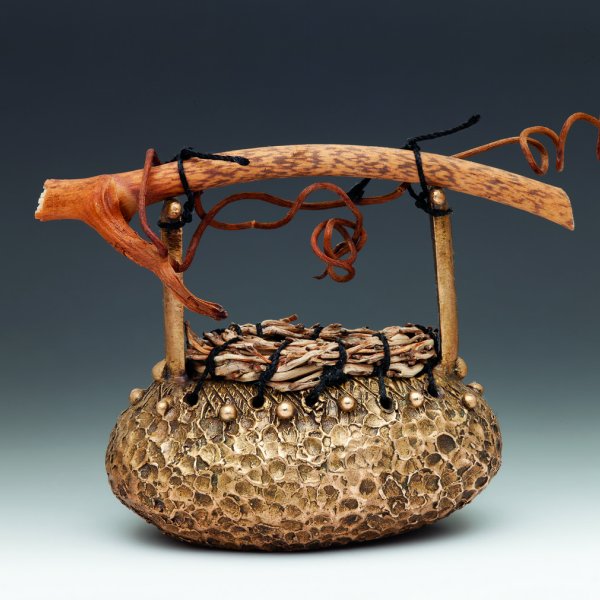
Untitled, 2021, lost wax cast bronze, coiled palm fruit stalk, grapevine, silk, 1.5 x 2 x 1 in. Photo by George Post Photography.

Lidded box, 2021, lost wax cast bronze, black onyx, 1.0625 x 1.0625 x 1.0625 in. Photo by George Post Photography.
Since retiring she’s become a full-time artist, and a move to the Northern California hamlet of Fort Bragg—plus the pandemic—has offered her the peace and quiet to, she says, “work slower and savor the joy of the materials.”
Ogawa models her vessels—and her slightly larger sculptures, which include a bronze kimono and a samurai kabuto (helmet)—in multiple types of wax, then casts them using the venerable lost-wax technique. Then comes the application and weaving of fibers—“they have to be thin enough to be in scale,” she says, “and the needlework that’s required can be a real challenge.”
This is work she “can’t help but do,” she says, and it’s all homage to her background. Her father, Howard, became a hero to Asian American dental students who, in the 1950s, were barred from university dental fraternities with their extensive labs. Howard opened his lab to all comers, at all hours, and mentored generations of dentists without charge.
“The needlework that’s required can be a real challenge.”
Suzye Ogawa
Ogawa uses Howard’s dental tools in her work, she says. To create embellishments on her wax models, she uses Japanese type from the Empire Printing Company, the first Japanese-language print shop in Little Tokyo, which opened in 1912 and closed in 1990.
“My pieces,” she says, “all ultimately come from the places that are important to me.”◆
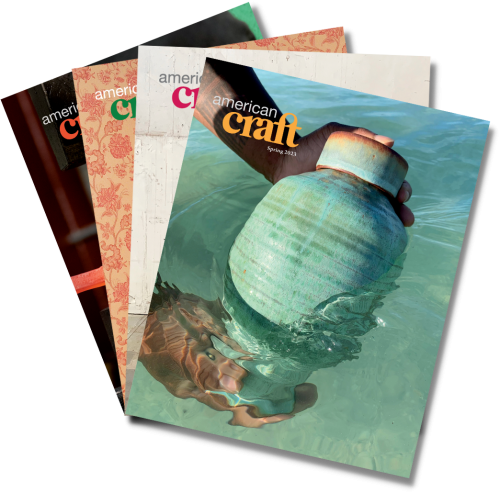
Learn more about the world of craft by becoming a member today!
Become an American Craft Council member to receive a quarterly subscription to the award-winning American Craft magazine along with a host of other benefits.


